#100s bce
Text
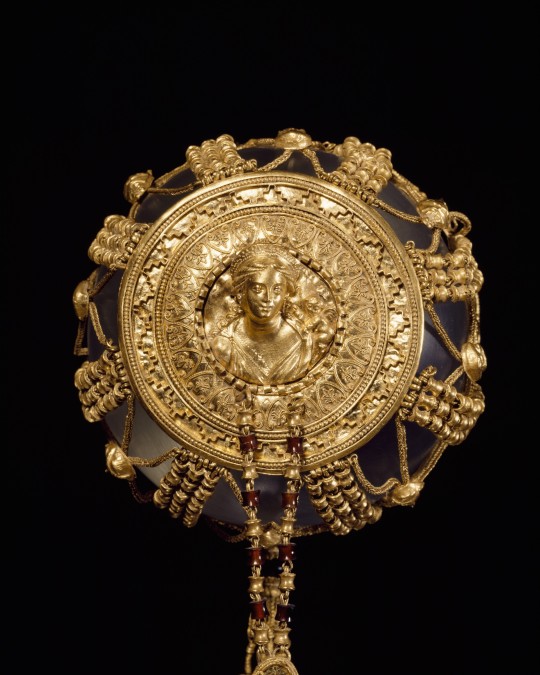
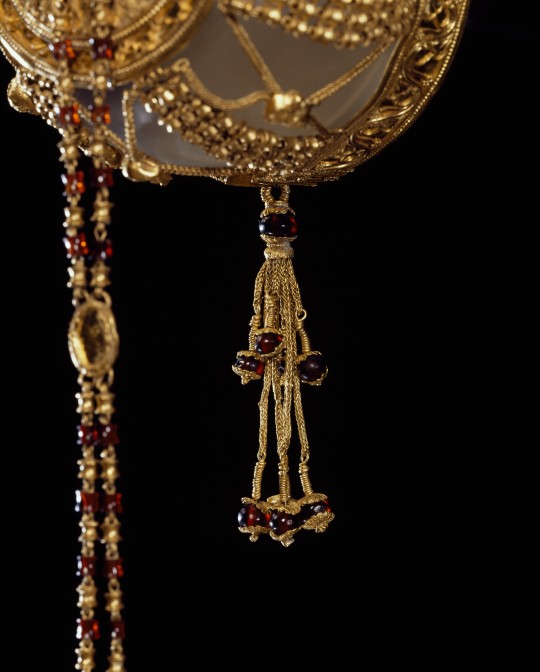

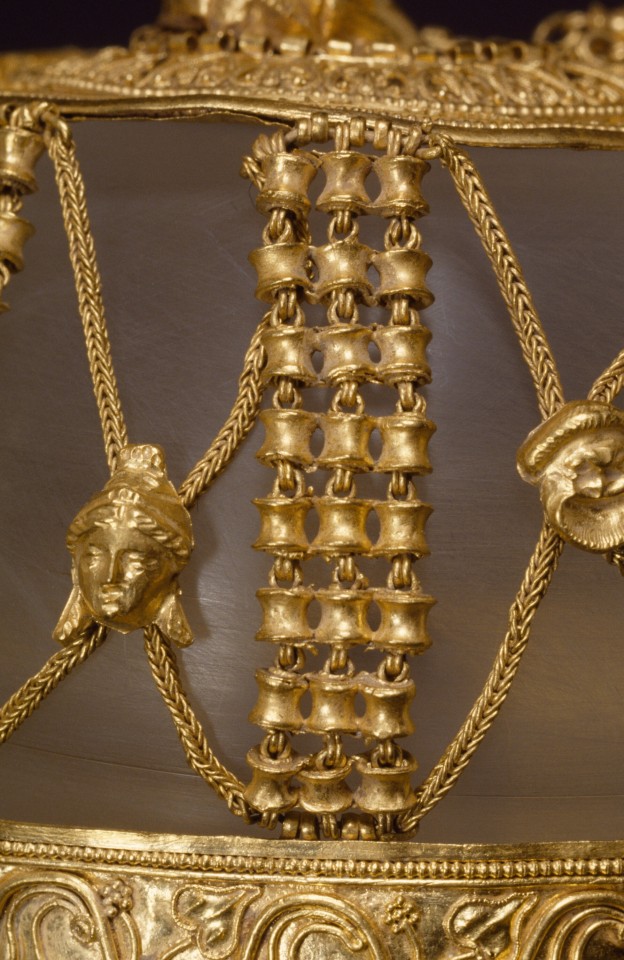
Gold hairnet, Ptolemaic, 225-175 BCE
From the Getty Villa Museum
#hairnet#gold#fashion#fashion history#accessory#history#225 bce#200s bce#175 bce#100s bce#bce#ancient#ptolemaic#ancient greek#ancient egyptian#greek#egyptian#ancient greece#ancient egypt
651 notes
·
View notes
Text
Bao Gu (l鮑姑), was a Chinese Taoist physician. She is the daughter of accomplished Taoist practitioner and governor Bao Jing and the wife of Ge Hong who is the author of Baopuzi. She is also known as one of the famous four female physicians in Chinese history, along with Zhang Xiaoniang of Northern Song dynasty, Yi Xu of the Western Han dynasty, and Tan Yunxian, who was active during the Ming dynasty. She was active during the Eastern Jin dynasty.
Zhang Xiaoniang (11th century), was a Chinese physician. She is known as one of the famous four female physicians in Chinese history, along with Yi Jia of Western Han dynasty, Gu Bao of the Jin dynasty and Tan Yunxian, who was active during the Ming dynasty. She was active during the reign of Emperor Renzong of Song.
Yi Jia (Yi Xu, 2nd century BC), was a Chinese physician. She is known as one of the famous four female physicians in Chinese history, along with Zhang Xiaoniang of Northern Song dynasty, Gu Bao of the Jin dynasty and Tan Yunxian, who was active during the Ming dynasty. She was active during the reign of Emperor Wu of Han.
Tan Yunxian (Chinese: 談允賢; 1461–1554) was a Chinese physician during the Ming dynasty in China.
#medicine#women in history#inspired by max dashu’s twitter post#bao gu#zhang xiaoniang#yi xu#tan yunxian#1400s#1000s#300s#asia#east asia#china#100s bce
2 notes
·
View notes
Text

mosaic floor, 130-150 B.C.
0 notes
Text







………..sorry
#can you imagine what it was like to be a gay girl in 100 bce#jesus christ#the last days of judas iscariot#will never not be thinking ab it#you cannot feel betrayed without feeling love or whatever#web weaving#quotes#play#intertextuality#hotd#house of the dragon#alicent hightower#rhaenyra targaryen#rhaenicent#parallels#game of thrones#got#asoiaf
272 notes
·
View notes
Text


👩🏽🎓💃🏽👩🏽🎤FuryBlaze📝®️
Queen Mother

Qore : Ruler
👸🏾Egyptian Nubia Priestesses of Hathor
👸🏾Queen 5 Meroitic :
Ca. 50 BCE- 100 CE
@SolangeAshib TM
🗿Ancient
💃🏾Dance Woman
#Egyptian #Nubia #Priestesses of Hathor
#Queen 5 Meroitic : Ca. 50 BCE- 100 CE
3 notes
·
View notes
Text
I must draw young Solomon with dark hair. I must turn the tide.
10 notes
·
View notes
Text
trying to research historical vietnamese clothing lead me down a rabbit hole i wasn't prepared for
#by which i mean i see a lot of people claiming that the vietnamese and the koreans 'stole' chinese hanfu#a few of those people had chinese flags in their usernames or bios but all the comments im talking about are in english#for clarity's sake#they're like posting pictures of old vietnamese and korean art along with chinese art and pointing out the similarities in the clothes#while saying shit like 'the thieving viets stole chinese culture!!'#admittedly im not an expert on east and south east asian history#and i know there's bad blood between them#but i *do* know that china occupied vietnam and korea at different points in their histories#and in vietnam's case it happened in the han dynasty which was like 200 BC to 250 CE#(but not throughout that entire era)#and in both countries china had such a strong influence in the politics and culture#like vietnam used chinese hanzi for writing since the han dynasty and in korea#the chinese language has influenced the korean language since like 100 bce#i mean most korean surnames are classified as sino-korean in origin#i just don't think you can accuse nations of stealing a culture that's been a huge influence on theirs for thousands of years#mickey.txt
2 notes
·
View notes
Text
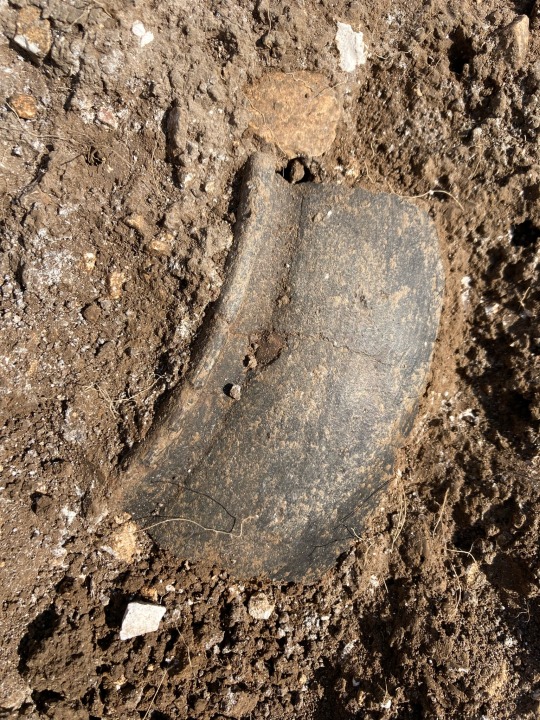
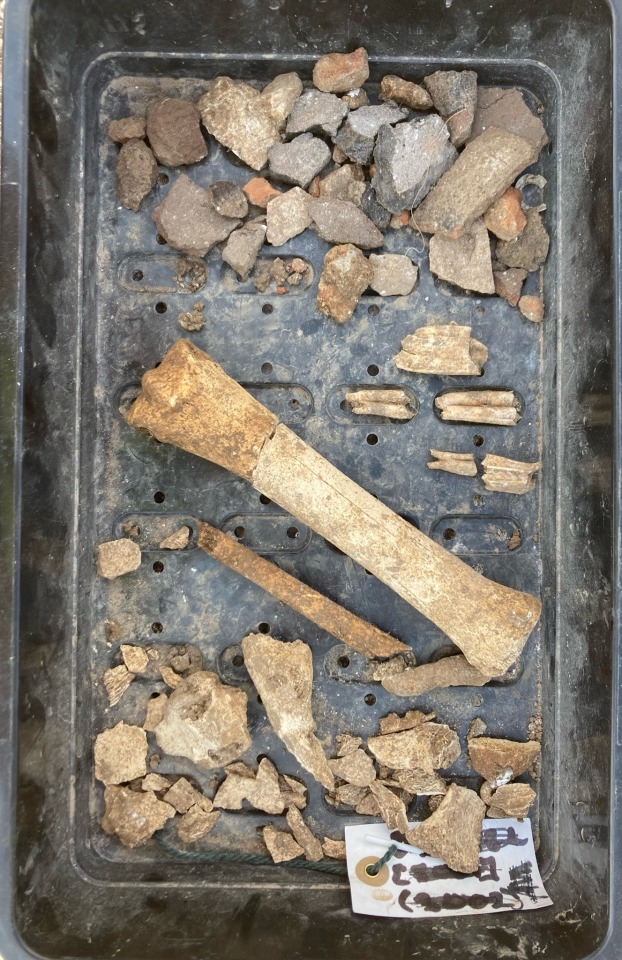
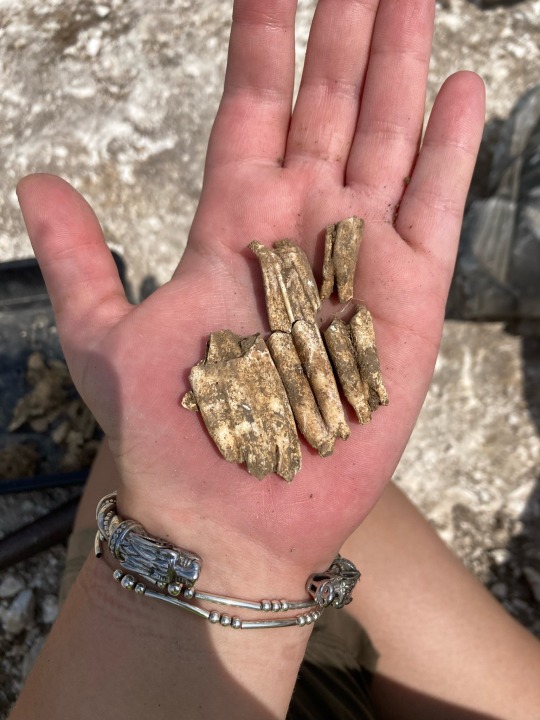




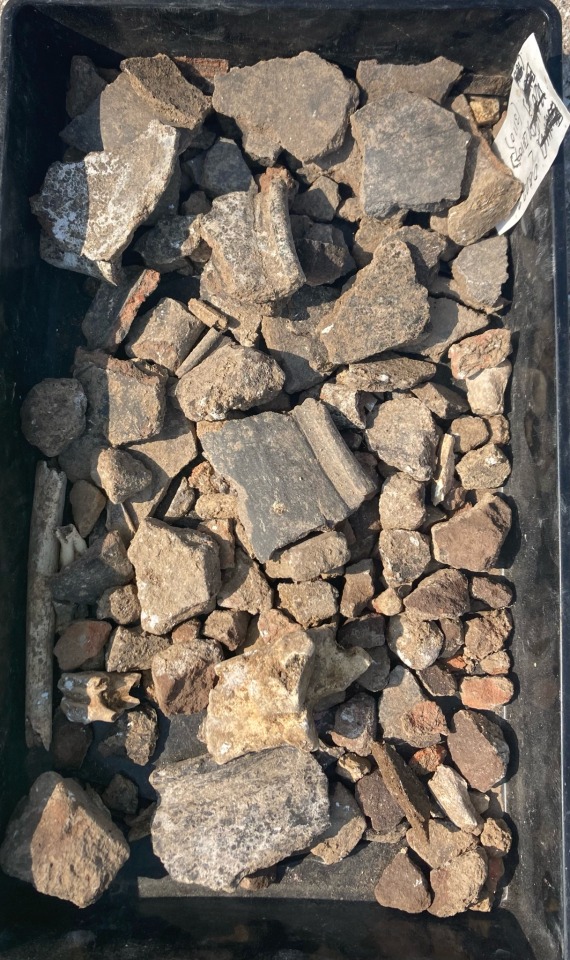
Durotriges ‘23
#archaeology#archeology#bournemouth uni#iron age#iron age society#iron age hillfort#durotriges#durotriges iron age#durotriges tribe#duropolis#dorset#100 BCE#durotriges big dig#BU big dig#bournemouth archaeology#my finds#all photos are mine
1 note
·
View note
Text

#Explaination for why I have posted 0 of my drabble attempts#I refuse to post anything until it gets 100+ reactions#Which can't possibly happen unless I post it#🤷♀️ makes sense to me#writing#writerscommunity#Error Writes#bce#bookcluberror#fanficerror#ffe#creative writing#fan fiction#fan fic writing#fan fic stuff#drafts#first draft#rough draft
0 notes
Text

Mosaic of sea creatures (the so-called "Fish Catalog") from the House of the Geometric Mosaics (VIII.2.16) at Pompeii. Artist unknown; ca. 100 BCE. Now in the Museo Archeologico Nazionale, Naples. Photo credit: Massimo Finizio.
#classics#tagamemnon#Ancient Rome#Pompeii#art#art history#ancient art#Roman art#Ancient Roman art#mosaic#sea creatures#NAM Naples
2K notes
·
View notes
Text
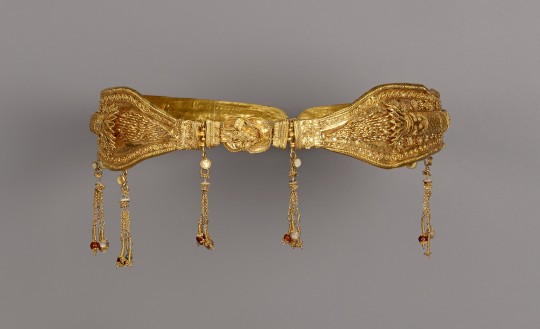
Diadem, Ptolemaic, 225-175 BCE
Gold, glass paste, bone or pearl, garnet, cornelian, and moonstone
From the Getty Villa Museum
#diadem#gold#fashion#fashion history#accessory#history#225 bce#200s bce#175 bce#100s bce#bce#ancient#ptolemaic#ancient greek#ancient egyptian#greek#egyptian#ancient greece#ancient egypt
427 notes
·
View notes
Text
I love reading the tags on the polls, the time period one is just people pointing out different definitions for the chronological framework (also fyi, Viking Age is not part of the medieval period where I’m studying!), and the underrated life poll is people just chanting or info bombing about mostly lichen (and I’m SO here for it!!)
#ansolutely love this#and everyone is obviously in their own right to have different definitions of the chronology#I just didn’t feel like defining all of it which is 100% my fault but ehh did not see the need#now I see that definitions do differ a lot though! and it’s teaching me quite something#and I want to point out that the different periods do not have global dates. they are more narrow periodic classifications#so the Neolithic might start 8000 BCE some places and 4000 BCE other places#tag chaos#own post
1 note
·
View note
Text
Greek sculptors of the 5th century BCE were the first named artists whose fame in their own time was matched by their subsequent reputation.
1 note
·
View note
Text




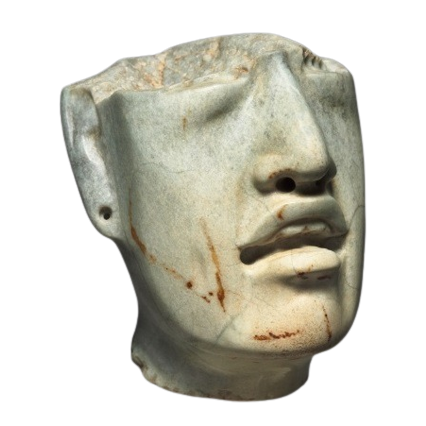


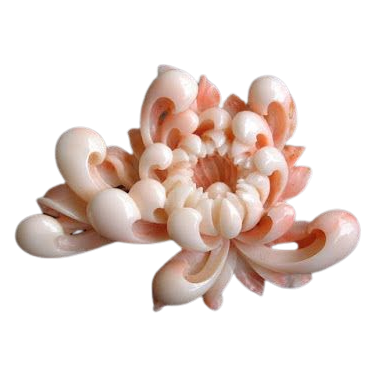

Random PNGs, part 190.
(1. Antique baby pin, 2. Bat embryo, 3. Sculpture by Glen Martin Taylor, 4. Illustration by Leonora Carrington, 5. Head fragment from Mexico c.900-300 BC, 6. Albino bat, 7. Illustration from "Stellaluna" by Janell Cannon, 8. Coral flower brooch, 9. Vietnamese horn vessel from 500 BCE-100 CE)
#png#pngs#transparent#transparents#moodboard#artboard#imageboard#sticker#stickers#collage#collages#mixed media#190
1K notes
·
View notes
Text
Ancient Necklace with Mosaic Glass Beads, from the Eastern Mediterranean, c.100 BCE-100 CE: this necklace is composed of 30 glass beads, most of which are decorated with stylized faces

From the John Paul Getty Museum:
The beads are made of multi-colored opaque glass and are decorated with heads and floral designs. The necklace is in good condition; some beads are chipped or cracked.

The exact origin of this piece is unknown, but it can be traced back to the Eastern Mediterranean, where it was likely made by a Greek or Roman artist.
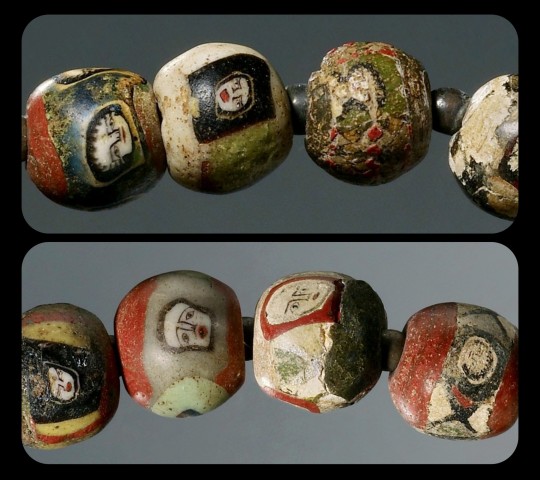
Each bead has a width of about 1.2cm (roughly half an inch); they're decorated with remarkably intricate details, and each face is depicted in its own unique style.

Sources & More Info:
John Paul Getty Museum: Necklace with Mosaic Glass Beads
#archaeology#artifact#history#ancient history#art#greek#roman#ancient art#antiquity#jewelry#beading#glass art#mosaic#crafting#greek art#roman art#eastern mediterranean#ancient#necklace#fashion#style#classical archaeology
2K notes
·
View notes
Text


Statuette of Apollo (100 BCE – 1 BCE)
Getty Villa, Gallery 216, Roman Treasury
Apollo stands in an s -shaped pose, inspired by the late Classical work of the Greek sculptor Praxiteles. The sculptor presents the harmony of features in the human body, emphasizing Apollo's youthful, muscular torso by carefully framing it with drapery. A dynamic, sinuous line extends from Apollo's upraised arm through his torso and left leg, on which he rests his weight. Apollo's long hair hangs loosely around his head and neck.
316 notes
·
View notes